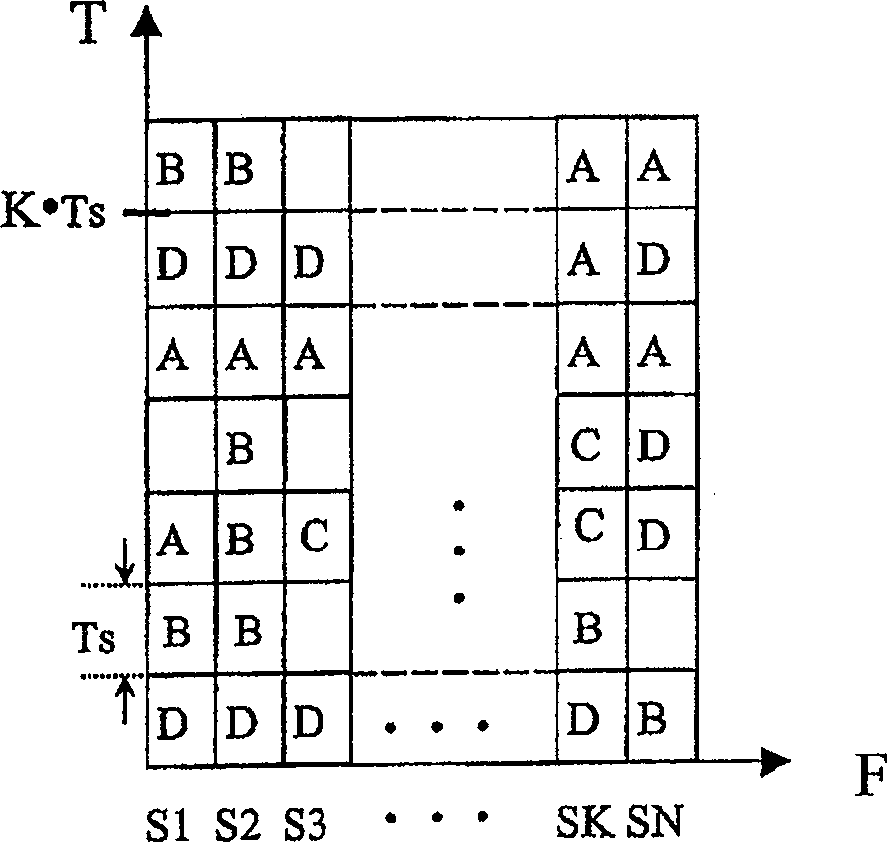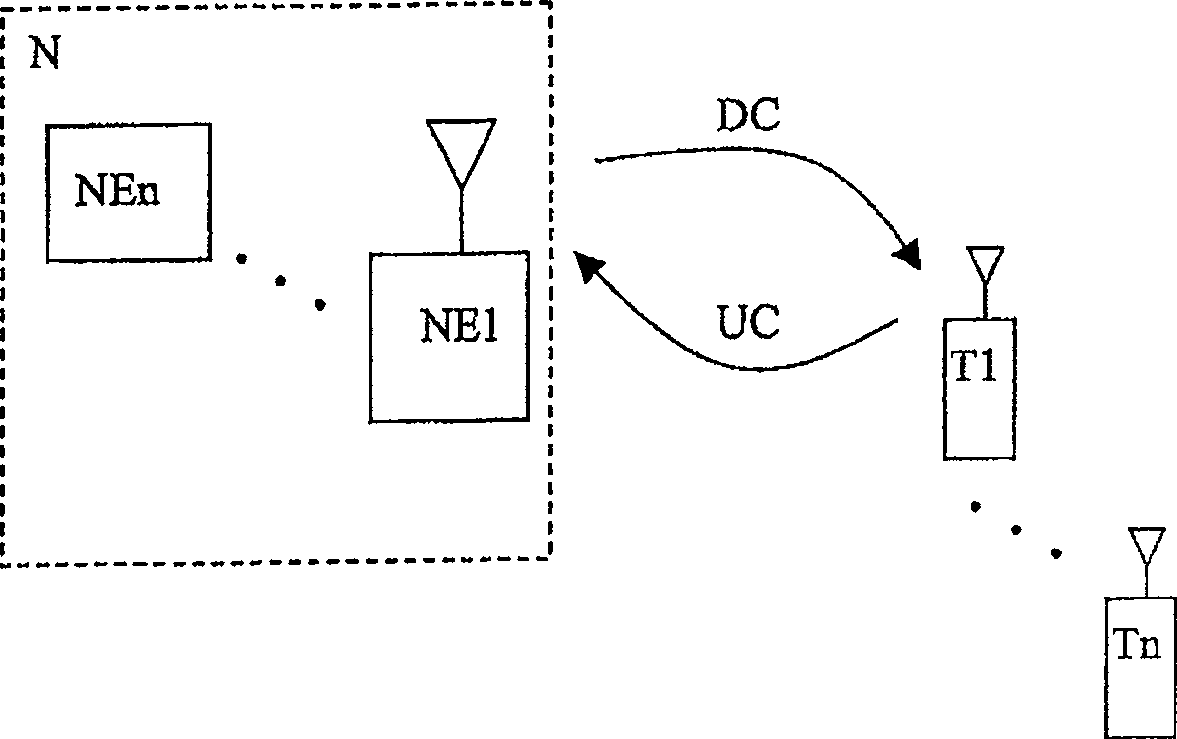Method for inter-cell interference coordination for OFDM mobile communication system
A technology for mobile communication systems and inter-cell interference, which is applied in the direction of data exchange, transmission system, and wireless communication through path configuration. It can solve problems such as poor service quality and low data rate, and achieve increased service throughput and effective wireless resources. , the effect of improving user service quality
- Summary
- Abstract
- Description
- Claims
- Application Information
AI Technical Summary
Problems solved by technology
Method used
Image
Examples
Embodiment Construction
[0019] figure 1 An exemplary allocation scheme for allocating carriers S1 to SN to user channels A, B, C and D in an OFDM time-frequency grid (T-F) is shown.
[0020] OFDM offers the possibility to flexibly assign one or more carriers S1 to SN to one logical channel A, B, C or D to control the data rate of the user channel. In a TDMA system, since this point may change over time (for example, the period of change is K symbol period Ts, such as 2ms), therefore, as figure 1 As shown, we propose a two-dimensional resource allocation grid, referred to as T-F grid in the following.
[0021] For data transmission, some time-frequency grid positions are not available because these time-frequency grid positions are used to carry pilot or signaling information. User allocation for the remaining locations can be done based on frequency or time or a combination of both.
[0022] figure 2 Shows a block diagram of a mobile communication system in which, at least in the downlink, a m...
PUM
 Login to View More
Login to View More Abstract
Description
Claims
Application Information
 Login to View More
Login to View More - R&D
- Intellectual Property
- Life Sciences
- Materials
- Tech Scout
- Unparalleled Data Quality
- Higher Quality Content
- 60% Fewer Hallucinations
Browse by: Latest US Patents, China's latest patents, Technical Efficacy Thesaurus, Application Domain, Technology Topic, Popular Technical Reports.
© 2025 PatSnap. All rights reserved.Legal|Privacy policy|Modern Slavery Act Transparency Statement|Sitemap|About US| Contact US: help@patsnap.com



